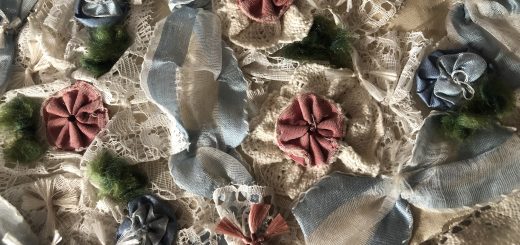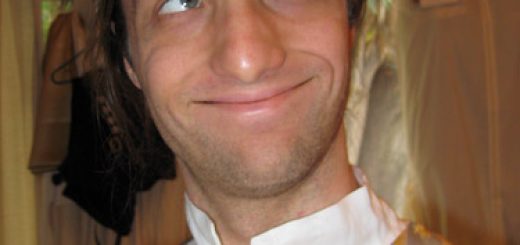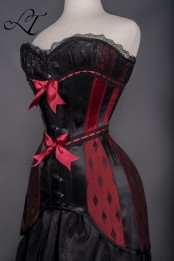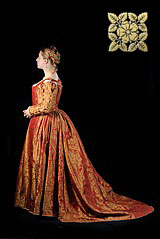Boning test – spiral vs. flat steel
I mocked up an overbust corset this week that was drafted for a small frame with a large ribcage that still allows for reduction at the waist. I boned one side with spiral (plus flat at the lacing) and one with flat steel. The spiral allows for more curve in at the waist and allows for the patterning for the ribs & also for the bust to curve more gracefully. I definitely prefer the bust with the spiral. As this is a modified pipe-stem the spiral makes it look more like I envisioned in the patterning.
You can see the differences here (left,spiral;right,flat):

I usually chose a combination of steel types in accordance to each individual area being boned.







L – this is a fantastic little visual treatise on what types of boning produces what effect. thanks!!!
Because this is something I’ve never been able to find out much information on – I’d love to discuss sometime how changing where the boning channels are changes the shape/support of the corset.
For instance, I’m in the process of building two new Victorians for myself (one for workaday at Dickens, one for “performance” at PEERS). My old gold corset is just boned at seam channels, all vertical, almost entirely flat steel. I’m thinking that on the new performance one, which has this gorgeous embroidered silk on the front, I’d like to do more angled boning channels (for slimming lines, doncha know.) But I have no idea what that does for support purposes, or if it would function just the same as regular seam-channels. Any comments?
That would be a good next visual project for me to experiment with. I imagine each pattern would react differently, but there are probably some universal truths. For example, I think of vertical boning as supporting the fabric from top to bottom so it doesn’t sink into the waist. I find this fact also makes it hard to do floating fashion fabrics that don’t wrinkle (my trick is to hand sew from the inside each channel to the structural fabric with the boning – or to sew the boning channels right to the seam allowances).
On some more complicated antique cuts I’ve seen some non-vertical boning placement and would love to know the purpose of each style. I’d maybe look into the different patterns of piping on Victorians which were often done at different angles. Even most s-curve corsets the shaping was done in the seams and the boning is mostly vertical although I know of an extant example with a curved shaped bone going from the back top to the front bottom ( Waisted Efforts, pg.185)
So I imagine the cut if often more important – if you bone it at an angle and you get weird wrinkles you need the boning at a 90 degree angle from the wrinkles. So maybe some of the strange angled boning was to take care of such issues?
A have so many questions and am entirely curious about this too.